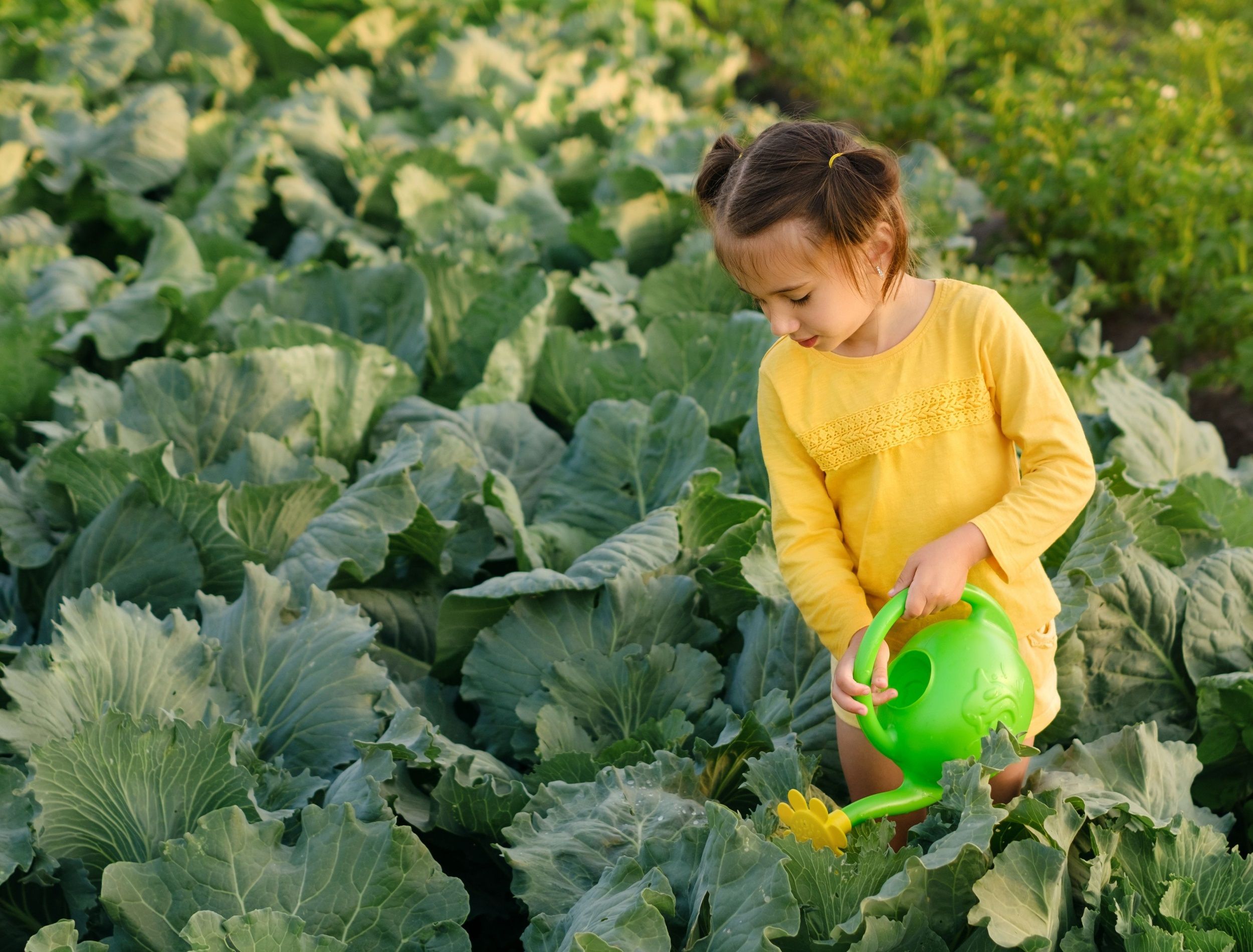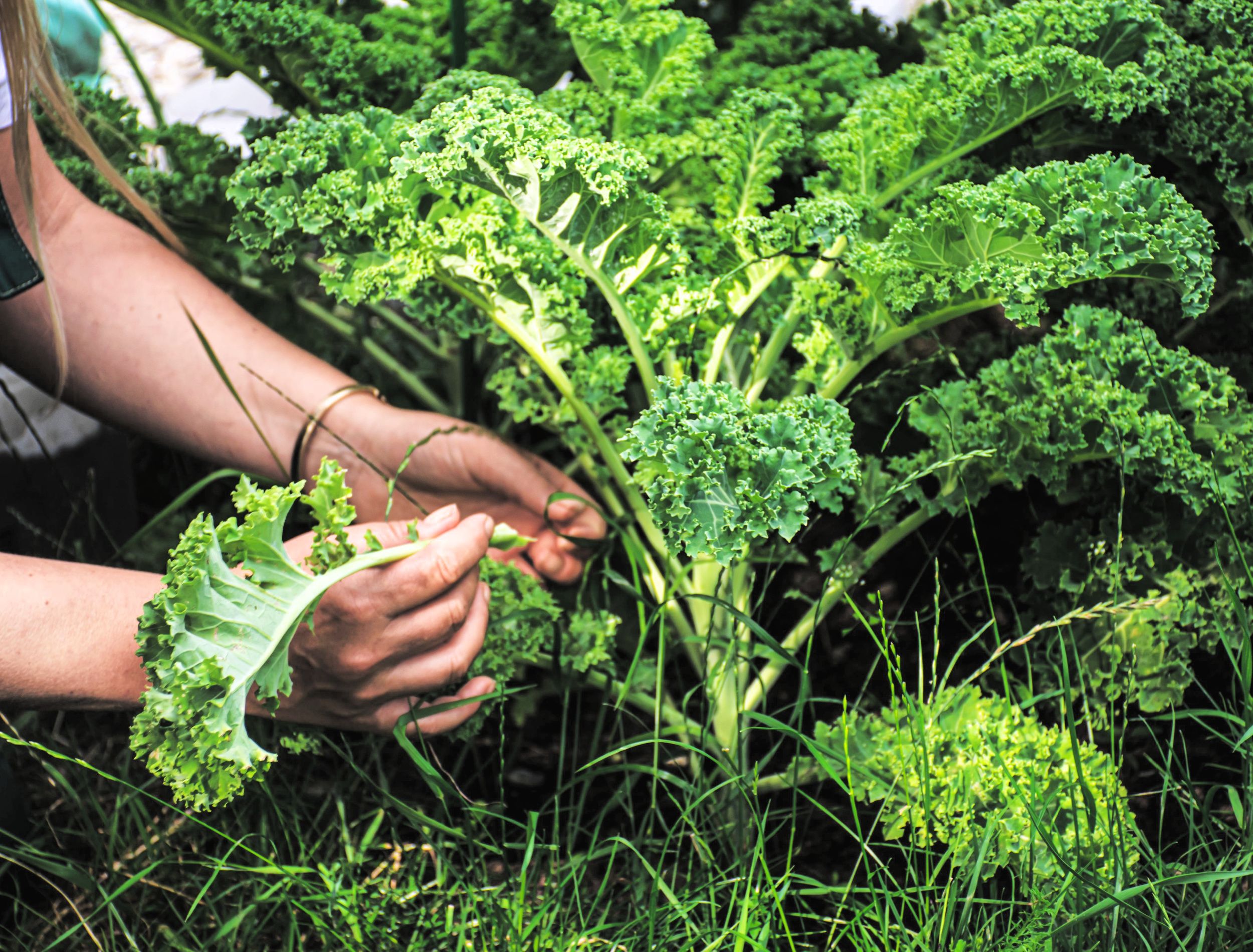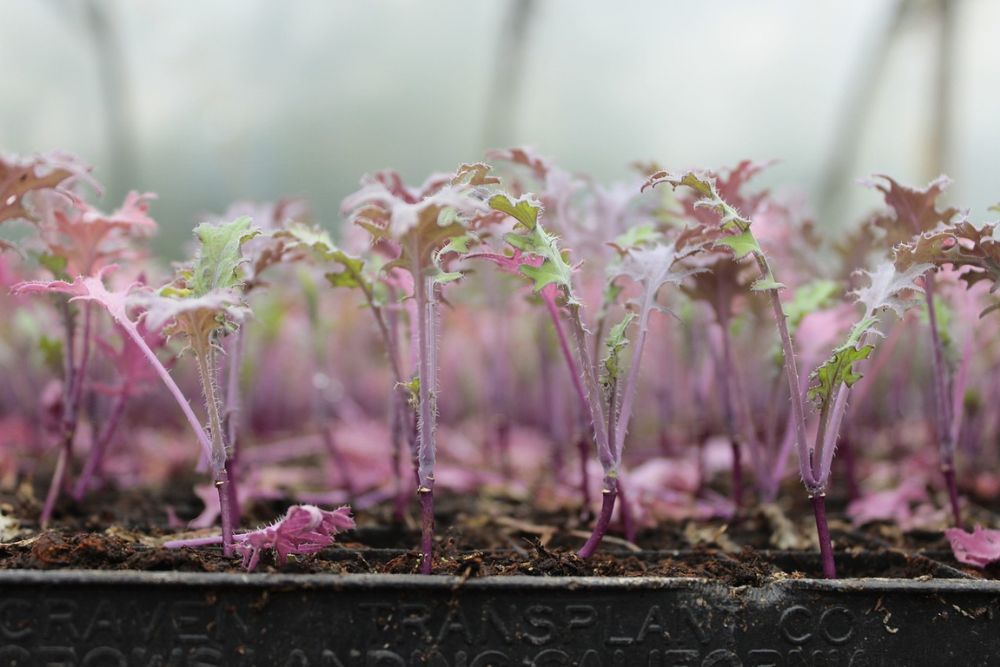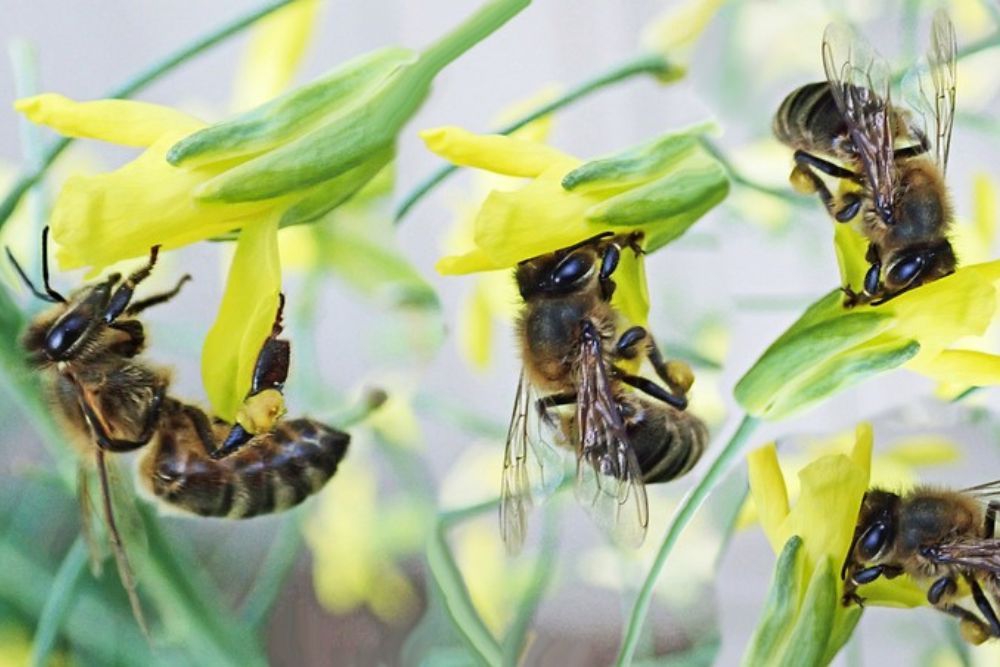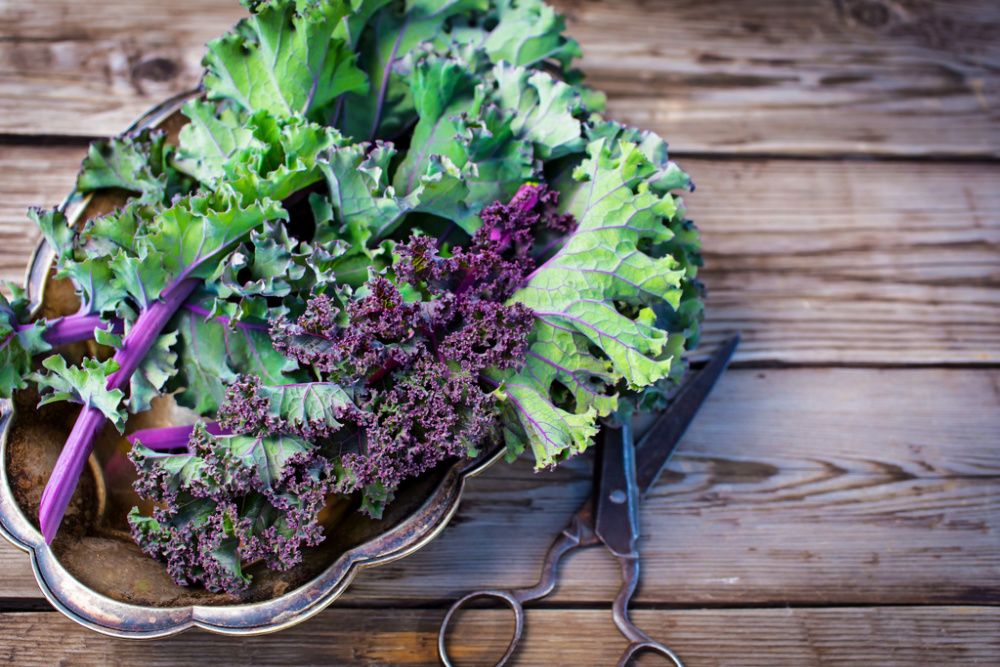Kale! The leafy vegetable that is packed full of antioxidants, fiber, vitamins, is low in calories, and is renowned for its amazing health benefits! It's also low-maintenance and produces plenty throughout the year. What’s not to like?
For those looking for a new vegetable to try in the garden, kale is an excellent choice. Depending upon your hardiness zone and climate, this plant is cold hardy for winter, grows in summer, or will even grow indoors! With a little bit of TLC, each plant produces plenty to use in the kitchen.
Wondering how to improve the odds of your kale crop? Take a look at these five tips for growing kale both indoors and out!
Know Your Kale Type
Image credits: Amverlly via Shutterstock
There are a number of different types of kale, some include curly kale, 'Dinosaur' kale, or 'Siberian' kale, to name a few. Each type has a slightly different color, leaf shape, texture, and they even taste different!
Kale is a biennial plant, though it is often grown as an annual. Depending upon which type you choose to plant, the growing and harvesting times vary. The best way to choose which variety to grow is to identify your climate and taste preferences.
Take, for example, 'Red Russian' kale. This variety has straighter leaves than others and displays a purplish-red stalk. It requires an average of 55 days until harvest, producing a leaf that is sweeter and more tender than other varieties.
Pro Tip: When selecting your variety, keep in mind that some varieties are strictly ornamental. Though technically it is still edible, it is very bitter and therefore not often used for consumption.
Plant in the Right Time and Place
Image credits: MetsikGarden via Pixabay
Surprisingly, for kale, there is no one-time-only planting opportunity! If you miss the planting window in spring, there are other options.
Outdoors
For those wanting to harvest kale in summer if you live in USDA hardiness zones 2 to 10a, you're in luck. If you live in this climate plant in early spring. However, as kale is also cold hardy, surviving temperatures as low as 20 degrees Fahrenheit, it does succeed when planted in the fall. This is the best time for those living in hardiness zones 10a and 11 to plant kale. Gardeners seeking to produce this vegetable in winter must plant in August, about six weeks before the first frost.
Now, where are you going to grow that kale? Kale requires soil that is well-draining, has plenty of organic matter, and a pH between 6.0 and 7.0. Those in colder climates (zones 2 to 10), are able to plant their kale in full sun, as bolting is slowed with the cooler autumn temperatures. However, for those in warmer climates (zones 10 and 11), seek a place in the garden with partial shade to prevent it from bolting too quickly.
What is bolting, you ask? Bolting occurs when the temperatures get too high, reaching 80 degrees Fahrenheit, and your kale flowers and seeds, reducing the quality and production of those delicious kale leaves. Gardeners living in areas with warmer winters should try selecting a variety of kale that is slower to bolt for the best results. For example, varieties like 'Tuscan,' or 'Dwarf Blue Curled’ kale are less likely to bolt in warmer temperatures.
Indoors
Though kale is said to grow more successfully in colder climates, don’t let that stop you! Kale is not overly picky about its climate and therefore, is possible to grow indoors. And not just the seedlings!
While kale plants may not grow as large as those grown outdoors, they still offer the opportunity to harvest -- particularly, baby kale! (See below for more harvesting tips!)
Remember, that when taking kale from a household plant, harvest sparingly. Do not cut all the leaves off right away. Instead, if your kale consumption is high, plant multiple plants and harvest some from each of them at staggered times. This allows more time for your plants to grow added leaves!
Once your kale seedlings are grown, it is time to transplant them into a container! Choose a container that is between four to eight inches, has drainage holes, and is filled with organic potting soil. Offer thorough watering each week (about two inches of water per week) for improved growth.
Place your plant on a sunny windowsill -- east or west facing for summer, and south facing for winter). Alternatively, use a grow light to help the plant flourish year-round. Soon enough, you will have a kale plant at your fingertips in the comfort of your own home!
Find Companion Plants
Image credits: Beverly Buckley via Pixabay
Like many outdoor crops, kale likes to have friends nearby. Companion plants are a great way to grow a variety of crops that bloom and produce around the same time. They also sometimes offer benefits, like keeping away pests or improving the soil!
For kale, some of the best companion plants include other winter harvest vegetables. Onions are a good companion as they deter pests such as aphids which are harmful to kale. As well other companion plants like potatoes improve the soil, and marigolds draw beneficial insects like ladybugs, hoverflies, and parasitic wasps. Additional companion plants for kale include celery, lettuce, sage, and more!
Just as there are ideal partners for your kale plants, there are also plants to keep them away from. These include strawberries and tomatoes. The reason for avoiding these plants is due to the competition for soil nutrients.
Keep on Harvesting!
Image credits: yingko via Shutterstock
Whether you grow kale indoors or outside in spring or fall, there is plenty of kale to go around! Because kale withstands the cold, it allows you to harvest this vegetable during the winter months.
But how and when do you harvest?
Kale is ready for harvesting after about 50 days, depending upon the variety grown. To harvest, cut each leaf near the base with sharp and clean gardening shears or scissors. Always take the outer leaves first to give your plant time to continue producing.
Another alternative to harvesting the large leaves of mature kale is to harvest baby kale. Some prefer the tender texture of these leaves and eat them raw, but baby kale has a different harvesting time. Baby kale is actually the same plant, it is just cut at the early stages of growth. As soon as a few leaves on your plant develop, these are your baby kale leaves ready for use!
If you plant your kale to harvest in summer, one common issue is bolting. Bolting is when the temperatures get too high and, while kale still grows in warm climates, it causes it to flower and seed. Once bolted, the leaves of kale become tough and usually lose their sweetness. To prevent this, plant your kale seedlings a few weeks earlier. This gives your plant more time in the cooler months and allows you to harvest earlier before temperatures get too high.
Another option to prevent bolting is to find a more shaded spot in your garden. Also, try using mulch in the garden and watering regularly to ensure the plant's soil remains cool and moist. But if your plant does end up bolting, don't worry, the flower heads of a kale plant are actually edible! Simply cut these off and enjoy them too!
Pro Tip: Some gardeners swear that if you leave your summer-grown kale out for that first frost, the kale becomes sweeter!
Start ‘Kale-ing’ it Today!
Grow kale indoors or outdoors, in spring or in fall! Whatever your preference, there are numerous opportunities to enjoy this fresh vegetable.
For the best results, always keep in mind what type of kale you are choosing to grow. Also note where and when you plant it, as well as try to offer companion plants. Then, once it has time to grow, harvest your kale and use it in an abundance of recipes!
Are you ready to start ‘kale-ing’ it with this vegetable? Comment below on your preferred way to grow kale and your favorite recipes!

